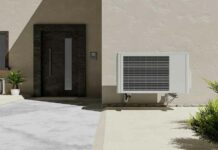Modern construction and logistics are complicated fields comprised of many variables and tricky situations. As such, both large construction companies and homeowners looking to do some light-duty logistics and construction need reliable, versatile vehicles to help them transport and manage their construction materials and resources.
This is exactly why many people in the US have and use pickup trucks and other large, expensive, and fuel-intensive vehicles pretty regularly. Yet, this is also why a very different kind of vehicle has also been making its way onto the American and broader Western market in recent years – the small Japanese kei trucks. So, let’s examine exactly how big of an impact these small trucks can have in modern construction and light-duty logistics.
What are kei trucks?
Even if you haven’t heard of these small Japanese trucks before, you’ve likely seen them either on the streets or online. These vehicles have actually been widely used in Japan ever since the end of the Second World War, as they were pivotal for the reconstruction of the country and the restart of Japan’s economy.
In essence, kei trucks are construction vehicles with small engines and a light bed load capacity that are meant to only carry medium loads but are made to be as versatile, fuel-efficient, maneuverable, and convenient as possible. The standard kei truck’s engine is no more powerful than a 660 cc four-stroke, which gives it a carrying capacity of up to 770 lbs (350 kg).
Some variations exist depending on the brand and model, but 660 cc is the standard to this day. This gives most kei trucks a limitation on how much they can carry and over what distances, making them ill suited for most heavy-duty tasks. However, both in large-scale construction and especially in most standard homeowner, farming and small business logistics, there are also lots of tasks that don’t really require the use of a heavy-duty vehicle that has a MPG (miles per gallon) average of 8 or less.
Instead, for everything under 770 lbs (350 kg), a much lighter, more compact, and versatile kei truck can do the same (and even better) job, but with an average MPG of 30 to 40 instead of 8.
Drawbacks of Japanese kei trucks for construction and light-duty logistics
1. Difficult to find replacement parts
Kei trucks may be all over Japan, but they are still fairly new in the US and the West. This makes finding the right replacement parts tricky, unless you have the right place for mini truck accessories and gear near you.
2. Light bed capacity
While this doesn’t come up nearly as often as many people think, there are often situations when a bed capacity of 770 lbs is insufficient and a more powerful vehicle is necessary.
3. Better suited for short distances
Kei trucks are perfectly usable for long travel distances, especially given their low fuel consumption. However, kei trucks aren’t as fast as most modern pickup trucks. They have a safe top speed of around 80 mph, but a recommended standard in the 60-67 mph range, especially when loaded. This makes long-distance logistics overly slow.
Benefits of Japanese kei trucks for construction and light-duty logistics
1. Maneuverability
Construction-related logistics is not just a matter of carrying heavy loads over long distances. Instead, it also often includes carrying materials through narrow and busy city streets, navigating tight spaces in construction sites or around the yard or farm, and so on. In such situations, having a much smaller, lighter, and significantly more maneuverable vehicle can be priceless, as it can bring your materials to the exact spot where you need them.
2. Versatility
Kei trucks may have an upper carrying limit, but they are endlessly versatile in virtually every other aspect, as they can be used for transporting anything anywhere, with little to no hassle.
3. Affordable Price
A standard pickup truck in the US tends to cost tens of thousands of dollars, often higher than $60,000. In contrast, an imported kei truck costs a fraction of that, with most kei trucks being around and below the $5,000 mark.
4. Fuel efficiency
With an average MPG of 30 to 40, kei trucks are usually five or more times more fuel efficient than the standard American pickup truck. This is a phenomenal difference that can drastically lower the long-term fuel expenses of any homeowner, farmer, or construction business.
5. Value Retention
Kei trucks are simple and reliable machines, unlike the often over-designed and needlessly complicated modern pickup trucks and other construction vehicles. This makes it very easy to keep kei trucks in peak condition for not just years, but decades, as long as you do your due diligence to take good care of them.




























